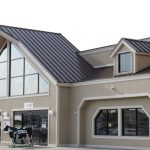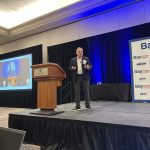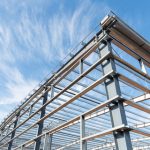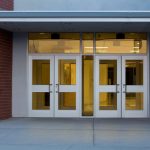“An ounce of prevention is worth a pound of cure”
The phrase, “An ounce of prevention is worth a pound of cure,” has been repeated over and over again by millions of people with rarely a thought to its origin. It was written by none other than Benjamin Franklin and appeared in the Feb. 4, 1735 edition of the “Pennsylvania Gazette.” It is relevant here not just because of its obvious merit, but because Benjamin Franklin used it in making a sound case for a safety issue of his time. He was trying to convince people of the need for an organized firefighting group in the greater Philadelphia area. His point was well taken because by the end of the next year the city of Philadelphia had its first volunteer fire department called the Union Fire Company.
Today, safety should be a primary concern not just on a construction job site but in all workplace conditions. Why? According to Occupations Safety and Health Administration (OSHA), falls are among the most common causes of serious work-related injuries and deaths. In most cases these accidents could have been prevented. It was for this reason that the organization was established in 1971, and since then OSHA has continued to set and enforce workplace safety and health standards.
 |
Slips, trips and falls
Falling incidents are commonly referred to as slips, trips and falls (STFs). The U.S. Department of Labor recently published data showing that in just the year 2011, STFs accounted for 4,693 deaths or 14 percent of all workplace fatalities in the United States. Falls from elevation hazards are present at almost every job site, and many workers are exposed to these hazards daily from rooftops, unguarded machinery or being struck by heavy construction equipment. Any walking/ working surface could be a potential fall hazard. Additionally, many industrial facilities have machinery and equipment being used that require extreme care when operating or repairing on an ongoing basis.
Fall prevention can include a variety of actions to help reduce the risk of accidents. According to OSHA, an unprotected side or edge which is 6 feet or more above a lower level should be protected from falling by the use of a guard rail system, safety net system or personal fall arrest system. Fall arrest can be divided into two major types: personal fall arrest and general fall arrest. Personal fall arrest system
The personal fall arrest system or PFAS (“lifeline”) must include four elements referred to as the ABCDs of fall arrest:
• A – Anchorage: a fixed structure or structural adaptation, often including an anchorage connector, to which the other components of the PFAS are rigged.
• B – Body Wear: a full body harness worn by the worker.
• C – Connector: a subsystem component connecting the harness to the anchorage, such as a lanyard.
• D – Deceleration Device: a subsystem component designed to dissipate the forces associated with a fall arrest event.
Each of these elements is critical to the effectiveness of a personal fall arrest system. There are many different combinations of products that are commonly used to assemble a personal fall arrest system, and each must meet strict standards. The specific environment or application generally dictates the combination or combinations that are most appropriate.
 |
General fall arrest
General fall arrest can include, but is not limited to, non-slip walkways, guard rails, caged ladders, stair railings and safety nets. While these are more permanent solutions, their presence at a workplace can truly prevent serious injury and death. Even before using any of these fall arrest solutions, fall prevention starts with the right mindset. For a safe environment to exist, workers need to be properly trained and be focused on safety first. Hands-on training in the recognition, avoidance and prevention of construction safety hazards is offered by OSHA as well as other organizations.
A continued awareness of safety by employees and employers both at the construction site and the workplace will go a long way to promote fall prevention and avoid serious injury or death. Or, as Benjamin Franklin once said, “an ounce of prevention is worth a pound of cure.”
James M. Fox is president of Fayetteville, Ga.-based Design Components Inc. For more information, visit www.designcomponents.com or call (800) 868-9910.






